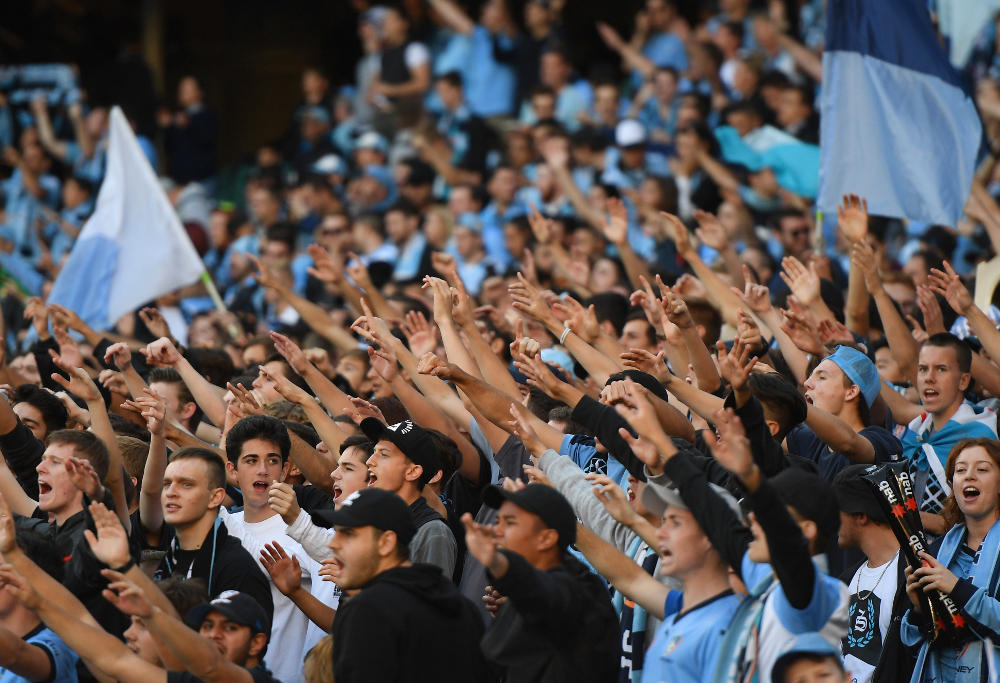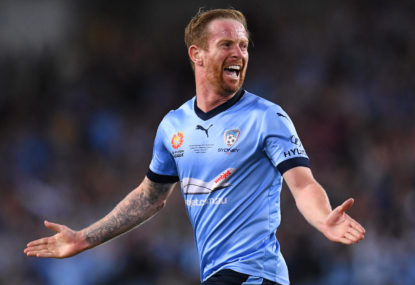Vigorous discussions around the A-League often have their origins in opinion on an interpretation of raw statistics. The numbers are tweaked and twisted, man-handled and wrenched until a view or slant on the issue at hand is reached.
Serve is returned with an alternative take on the numbers and an array of mitigating factors, reasons and excuses that all play a role in the conclusions made.
Everything from weather, team success, the presence of other sports through the summer, the FFA, money and fans are all listed as influential factors around football in Australia and some of the battles it has fought. Every now and again the old chestnuts of bigotry, racism and discrimination are thrown into the mix.
As something of a start-up, the A-League has grappled and jostled for market share and traction and appears here to stay, but how did season twelve measure up?
#1 Goals
It is somewhat absurd to say that football is about scoring goals, however, as trite as it might sound, goal production will always be a fundamental driver of interest and the entertainment value of the game.
Whilst many tight, skilful and gripping scoreless draws are fought out weekly, all over the world, low goal numbers cannot be sustained.
The non-footballing section of our community jumps over a scoreless draw like a tabloid on a headline.
The A-League has seen a steady incline in average goals per game since an historical low (2.01) in 2007-08. The last three seasons, the figure has sat around three with the spike being in 2015-16 when the nets shook 3.12 times per game. The 2016-17 figure of 3.03 is a continuation of the trend towards positive football.

(AAP Image/Dean Lewins)
Officials willing to administer penalties and protect the stars of the league with the use of yellow cards adds to goal production, as do the managers with their overall approach to the contest.
The quality of some of the men up front correlates to these figures as well and avoiding stodgy defensive football is something the league is doing well right now.
#2 Australian Content
Whilst the international stars such as Milos Ninkovic, Besart Berisha, Diego Castro and Bruno Fornaroli show us clearly that we need them here to bolster our stocks, the role Australians have to play in our top flight cannot be underestimated.
Having Tim Cahill on home soil was always going to create a stir and despite many feeling that the numerical impact on crowds hasn’t warranted his salary, it is essential for the league to have our Socceroos here performing week to week.
As much as we enjoy hearing of Aaron Mooy, Mass Luongo and Tom Rogic doing great things overseas, having players like Alex Wilkinson, James Troisi and Matt McKay here is key.
Without quality home grown talent on display, a hollowness can develop around the identity of the national team.
English football suffers from this, with the connection between the grounded reality of young, local footballers being far removed and diluted by the exorbitant salaries of the international stars raiding their shores and pockets.
The emergence of young Australian talent is vital, even considering that many will indeed be snapped up by wealthier clubs looking for the golden nugget.
A continuous supply of James Jeggo, Ryan McGowan and Riley McGree types is paramount, as is the experienced veteran returning to home shores.
#3 Attendance
Twelve thousand six hundred and fifty people, on average, attend each A-League match. This figure mirrors the numbers for the 2012-13 season. In between, there was a spike in 2013-14 and a steady drop since.
Most of the totals are within a fairly narrow ballpark. A few peaks and troughs caused by international stars, poor scheduling, very out of form teams and disgruntled fans, all balance out to reveal one simple fact.
Despite all good intention, the supporter base doesn’t appear to be growing or reflecting participation rates and the general interest in football.
The arguments and solutions around this are complex, divisive and lacking definition. What is known, is that luring more people, especially those young kids gazing at an EPL poster on their wall each night as they lay in bed, should be the number one concern for the league.
It is at the heart of sport and whilst some codes, contests and events can dismiss the paying attendee in preference to monumental television rights deals, Australian football cannot. It is a tribal, passionate and fan based game that still struggles to achieve the crossover between the football lover and the potential A-League fan.

(AAP Image/Dean Lewins)
Solving this will change sport in Australia as we know it. Finding the formula will prove challenging.
#4 Media Coverage
As a Foxtel subscriber, I must continually remind myself that I am in a minority. Watching each and every game per week is a luxury not shared by all. Outside the long-term commitment and outstanding promotion of the game through the cable giant, is everyone else getting their fair share?
Unfortunately, it appears not. Whilst there was something amazing about the Grand Final figures and they should be celebrated, free to air television, radio and newspaper coverage show little sign of an increased interest in the league.
Outside the epic culmination of the season, A-League news was still ensconced deep in the print media’s papers, rarely seeing the light of day on the back page. Television programs took their little pot shots over a bit of pathetic simulation and free to air matches were viewed by some, but never many.
In terms of traction, there doesn’t appear to have been much made. The arrival of channel Ten on the scene could be a game changer. Personally, I hope it is.
#5 Kids
Seeing netball knocked of its seemingly stable perch by the numbers of young women playing football pleased me no end. Being involved in both games, netball sat like a grinning Cheshire cat, sipping milk from an endless bowl that seemed to constantly replenish itself.
The growth in boys’ football continues and as the standard of instruction improves, academies are turning out players of real quality.
Sadly, most kids in Australia are still La Liga and EPL focussed. The average fan will always keep an eye on these leagues as they showcase the cream of the crop but the day Australian kids truly care about the A-League will be a tipping point for sport in this country.
In my day to day dealing with kids in football, the majority still perceive the A-League as a joke. Not just as being a few rungs below their favourite leagues mind you, but a joke!
It would be okay if they just weren’t interested or had no allegiance, but to openly laugh at the league is not a good sign for us all.
There is the odd Sydney FC or Mariners jersey on the training landscape yet Real Madrid, Barcelona and Liverpool still dominate and for good reason. Season twelve didn’t appear to make any significant inroads in this area.
Moreover, the season just passed appears to have been a treading of the waters in many ways. Much success, yet mostly a consolidation, as recent seasons have also been.
The stunning finish was merely that and with expansion on the horizon, something might need to change in order for the game to take a firm, forward step in the next few years.































































































